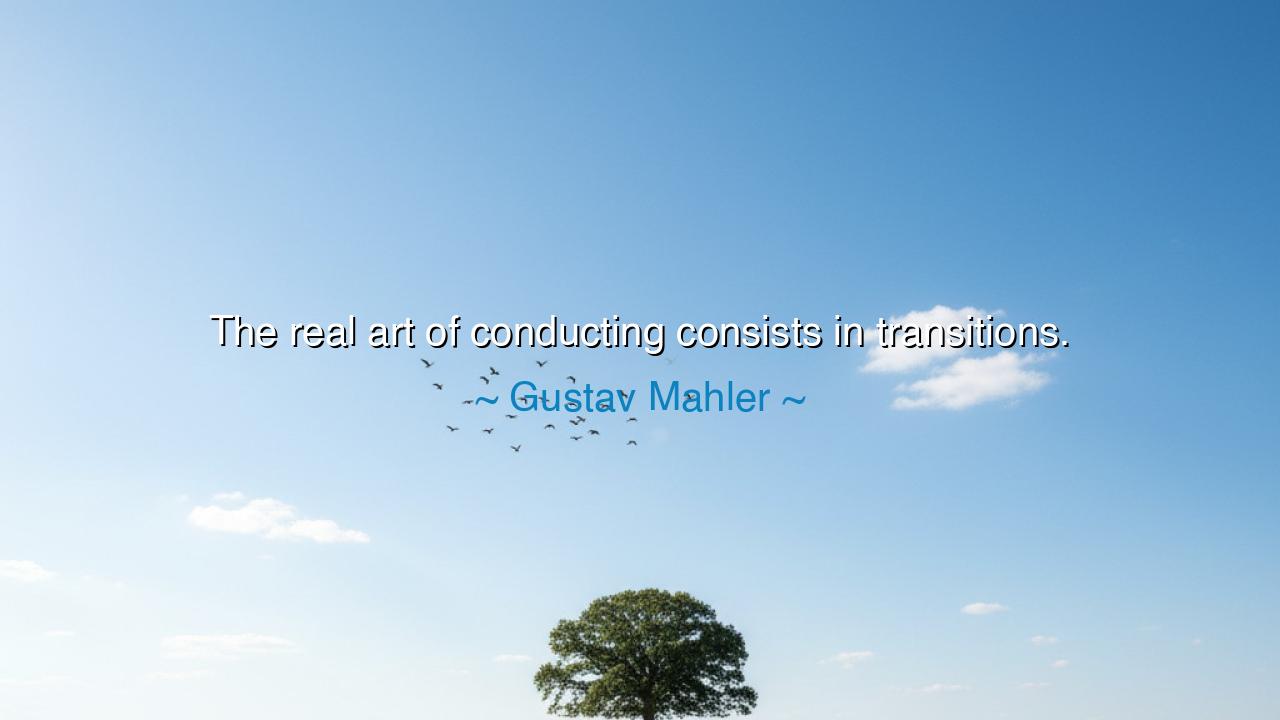
The real art of conducting consists in transitions.






Hear, O seeker of wisdom, the words of Gustav Mahler, the great symphonist of the late Romantic age: “The real art of conducting consists in transitions.” At first glance, these words seem to belong only to the realm of orchestras and batons, of violins and trumpets. Yet they carry a truth far deeper, a truth about life itself. For Mahler reveals that mastery is not in the grand beginnings or triumphant endings, but in the passages between—the fragile, subtle, and often overlooked bridges that give music, and life, its true meaning.
The first wisdom in this saying lies in the nature of transitions. In music, a conductor must guide his orchestra from one theme to another, from sorrow to joy, from chaos to peace. If the transition is clumsy, the spell is broken; if it is graceful, the listener is carried as if on a river, hardly noticing the change, yet deeply moved by it. The conductor’s greatness, then, lies not in commanding the loudest notes, but in shaping the flow of silence into sound, and sound into silence.
So it is in life. Beginnings are glorious, endings are memorable, but it is the in-between—the transitions—that test the strength of the soul. The move from youth to maturity, from hope to disappointment, from defeat to renewed courage—these are the passages where true artistry of living is revealed. To navigate these transitions with grace is to conduct one’s own life as Mahler conducted his symphonies: with wisdom, patience, and faith in the greater harmony to come.
History gives us luminous proof. Consider the life of Nelson Mandela. His greatness was not only in the moment of release from prison, nor in his ascent to leadership. His true mastery lay in the transition—from prisoner to president, from anger to reconciliation, from division to unity. Many could have seized power; few could have guided a nation through so delicate a passage without breaking the fragile music of hope. Mandela’s art was the art of transitions, and by it he transformed history.
Mahler himself knew this truth not only as a conductor, but as a composer. His symphonies are vast journeys, moving from the whispers of a single flute to the thunder of full orchestras, from the tenderness of a lullaby to the terror of brass and drums. The genius lies not only in these extremes, but in the transitions between them—the way despair melts into hope, the way silence becomes song. Through his own art, Mahler revealed that life, like music, is made whole by the passages we do not always notice.
The lesson for us is clear: attend to the transitions of your own life. Do not only celebrate the grand beginnings or the final triumphs. Learn to carry yourself with grace through the quiet changes, the uncertain crossings, the fragile moments where one chapter becomes another. These are the true tests of character. To stumble in them is human, but to move through them with patience and dignity is divine.
Practical wisdom follows: when you face change, slow yourself. Do not rush the transition; listen to its rhythm. When you move from one role to another, from one season of life to the next, take time to reflect, to breathe, to guide your own soul as a conductor guides his orchestra. In this way, your life will not be a series of broken fragments, but a symphony whose beauty lies in its flow.
Thus, remember Mahler’s teaching: “The real art of conducting consists in transitions.” And know that the real art of living does as well. To master the passages of change is to master the music of life. And if you learn to shape your transitions with grace, then your whole existence will be not a collection of scattered notes, but a song that endures through time.






AAdministratorAdministrator
Welcome, honored guests. Please leave a comment, we will respond soon